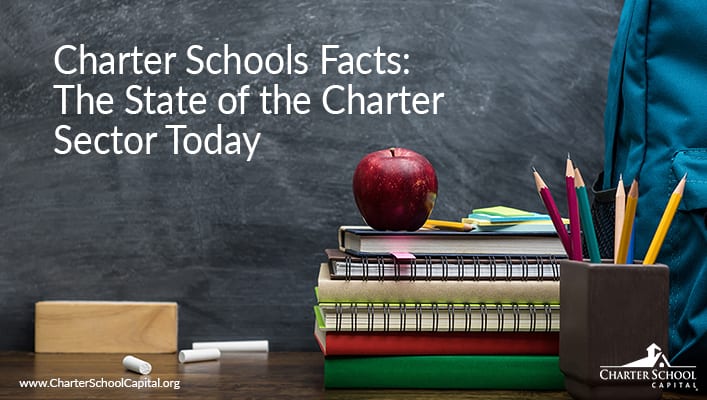Charter School Facts: The State of the Charter Sector Today
Editor’s Note: Bellwether Education Partners published the first The State of the Charter Sector in 2015. They have just recently completed the second edition, The State of the Charter Sector: What You Need to Know About the Charter Sector Today, in January of this year. It includes the latest available information on the charter sector (data on growth, geographical trends, school performance, etc.)
Because charter schools and the charter school movement continue to be a topic widely debated across the country, we are consistently working to dispel myths by sharing the facts. Similarly to the sentiments of the team at Bellwether, “Our goal is not to persuade but to inform. Rigorous debate — based on accurate information — is necessary for thoughtful policymaking and, ultimately, to ensuring all students have access to a high-quality education.”
The State of the Charter Sector: What You Need to Know About the Charter Sector Today
General Summary
- Schools: There are 7,039 charter schools
- Enrollment: 3 million charter students
- Enrollment Share: 6% of total public school enrollment are charter students
- State Charter Laws: 44 states and D.C. have charter school laws
Growth
- After years of rapid growth, the number of charter schools and students is starting to level off, though school closures understate the pace of new school openings
- The majority of schools opened since 2005 are in 16 states; 40 percent of all new school growth during that time occurred in California, Texas, and Florida
- Growth in high-performing CMOs far outpaces overall sector growth
Performance
- The latest available research shows that, nationally, charters outperform traditional public schools in reading and underperform in math
- National performance masks strong performance across many regions, locales, & student groups
- Charter performance is improving over time
- More recent sector-wide research is necessary to understand charters’ impact nationally
Challenges
- Charter schools face challenges in seven areas: state policy, authorizers, facilities, human capital, funding, public opinion, and
- State laws do not allow or set a cap on charters, restrict authorizers, and limit access to funding and facilities
- Authorizers are a key driver in charter performance, but there is wide variation in effectiveness
- Charters have limited access to appropriate facilities, but some state and federal policies help
- Charters face human capital issues, including shortages of teachers of color, unequal compensation, and low staff sustainability
- Charters receive 27 percent less in per-pupil funding than TPS
- Public support for charters has gone down in recent years
- Charters, like many TPS, struggle to ensure that all students have equitable access to high-quality schools and experiences once enrolled
- The sector has made progress on these challenges in recent years, but none have been truly solved
For the purpose of this blog post, we’ve just highlighted some top-level numbers and facts, but you can read the complete report here.
 Since the company’s inception in 2007, Charter School Capital has been committed to the success of charter schools. We provide growth capital and facilities financing to charter schools nationwide. Our depth of experience working with charter school leaders and our knowledge of how to address charter school financial and operational needs have allowed us to provide over $1.8 billion in support of 600 charter schools that have educated over 1,027,000 students across the country. For more information on how we can support your charter school, contact us. We’d love to work with you!
Since the company’s inception in 2007, Charter School Capital has been committed to the success of charter schools. We provide growth capital and facilities financing to charter schools nationwide. Our depth of experience working with charter school leaders and our knowledge of how to address charter school financial and operational needs have allowed us to provide over $1.8 billion in support of 600 charter schools that have educated over 1,027,000 students across the country. For more information on how we can support your charter school, contact us. We’d love to work with you!
